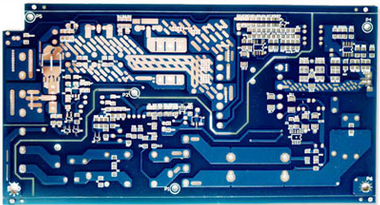The design of electromagnetic interference is mainly designed and processed from the aspects of hardware and software. The following is an introduction to the processing of electromagnetic compatibility from the PCB design of the single-chip microcomputer to the software processing.
1. Factors affecting EMC
1. Voltage
The higher the power supply voltage, the greater the voltage amplitude, the more emission, and the low power supply voltage affects the sensitivity.
2. frequency
High frequencies produce more emissions, and periodic signals produce more emissions. In the high-frequency single-chip microcomputer system, the current spike signal is generated when the device is switched; in the analog system, the current spike signal is generated when the load current changes.

3. Grounded
There are three signal grounding methods: single-point, multi-point and mixed. When the frequency is lower than 1MHz, the single-point grounding method can be used, but it is not suitable for high-frequency; in high-frequency applications, it is best to use multi-point grounding. Hybrid grounding is a single-point grounding method for low frequency and multi-point grounding for high frequency. The ground wire layout is the key, and the ground circuits of high-frequency digital circuits and low-level analog circuits must not be mixed.
4. PCB design
Proper PCB wiring is essential to prevent EMI.
5. Power decoupling
When the device is switched on and off, transient currents are generated on the power line, and these transient currents must be attenuated and filtered. Transient currents from high di/dt sources cause ground and trace "emission" voltages. High di/dt generates a wide range of high-frequency currents that excite components and cables to radiate. The current change and inductance flowing through the wire will cause a voltage drop, which can be minimized by reducing the inductance or current change over time.
2. Hardware processing methods for interference measures
1. Electromagnetic compatibility design of printed circuit board (PCB)
PCB is a support for circuit elements and devices in a single-chip microcomputer system, and it provides electrical connections between circuit elements and devices. With the rapid development of electronic technology, the density of PCB is getting higher and higher. The quality of PCB design has a great impact on the electromagnetic compatibility of the single-chip microcomputer system. Practice has proved that even if the circuit schematic design is correct and the printed circuit board is not properly designed, it will adversely affect the reliability of the single-chip microcomputer system. For example, if two thin parallel lines of a printed circuit board are close together, it will cause a delay in the signal waveform and form reflected noise at the end of the transmission line. Therefore, when designing a printed circuit board, you should pay attention to adopting the correct method, abide by the general principles of PCB design, and meet the design requirements of anti-interference. To get the best performance of the electronic circuit, the layout of the components and the layout of the wires are very important.